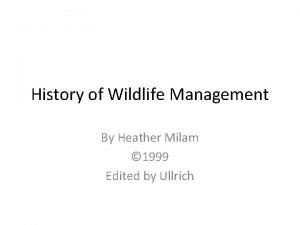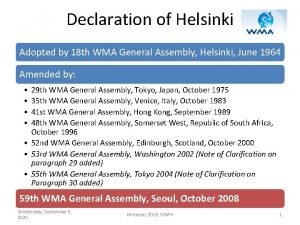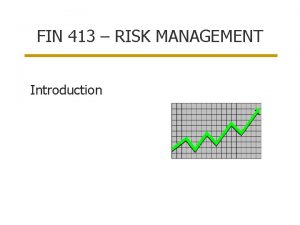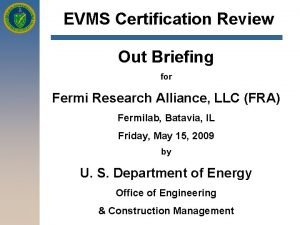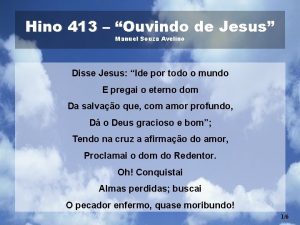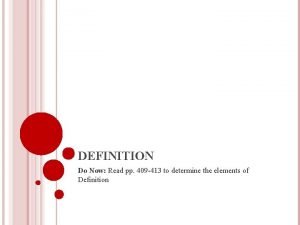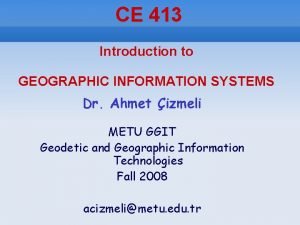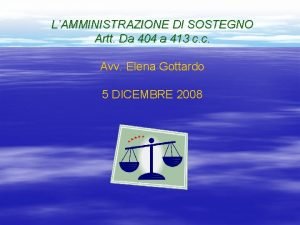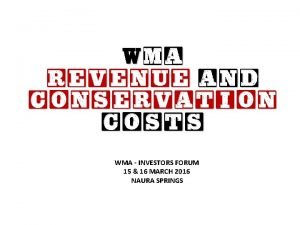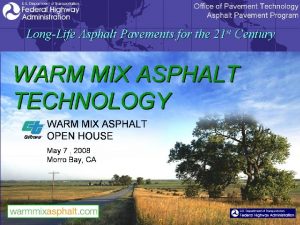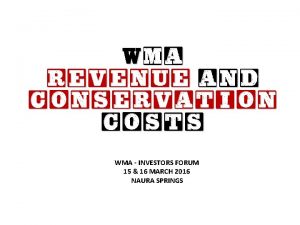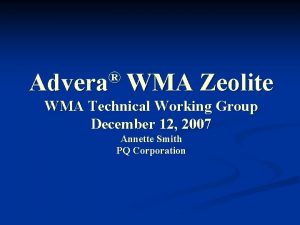COURSE CODE WMA 413 COURSE TITLE HYDROMETEOROLOGICAL INSTRUMENTATION











- Slides: 11

COURSE CODE: WMA 413 COURSE TITLE: HYDRO-METEOROLOGICAL INSTRUMENTATION AND NETWORK DESIGN II NUMBER OF UNITS: 2 COURSE DURATION: TWO HOURS PER WEEK COURSE COORDINATOR: DR. J. O. ADEJUWON E-MAIL: adejoseph 2003@yahoo. com OFFICE LOCATION: ROOM B 203, COLERM BUILDING OTHER LECTURERS: DR. GRACE O. OLUWASANYA

Course Contents • • Water levels of rivers, lakes and reservoirs, Gauges and procedures for measurement of state. Frequency of gauge measurements. Discharge measurements: by current meter, float method, dilution method. Measurement of correspondence stage by moving boat method, Ultrasonic method, Electromagnetic method, Stream gauging stations. Purpose: selection of sites, control sections, Artificial controls, stage discharge relationships. Stream flow computation, computation of average gauges height, computation of average discharge, Quality control of stream flow data. Sediment discharge: Measurement of suspended sediment discharge, Measurement of bed-sediment discharge. Collection, processing and publication of data. Collection and observation procedures. Transmission of hydrological and meteorological observations. Quality control, storage and cataloging. Special data collection requirement: `bucket surveys`` of storm rainfall, weather radar data. Extreme stages and discharges. Pre-requisite: WMA 313.

Course Requirements • This is a compulsory course for students in the Department of Water Resources Management and Agrometeorology and the student must have passed WMA 313 before taking this course. As a school regulation, a minimum of 75% attendance is required of the students to enable him/her write the final examination

Reading Lists • Ayoade, 2003: Tropical Hydrology and Water Resources, Mac. Millan, Nigeria, 276 pp • A Textbook of hydrology and Water Resources

River Gauging 1. 1 Introduction What is gauging? What is stream flow? What constitute stream flow? Stream flow measurement The common terms in stream flow measurement River or stream gauging; Hydrometry Water level/stage Discharge measurement Water level measurement Measurement of stream velocity Computation of discharge Stream gauging stations Site selection criteria

River Gauging 1. 2 Stage measurement Water levels of rivers, lakes and reservoirs Stage measuring instruments Staff gauges Manually operated weight/electric sensors Float operated stage gauges Depth sensors Procedures for stage measurement Frequency of stage measurements 1. 3 Discharge measurement Velocity – Area method Control structures Dilution gauging

River Gauging 1. 3. 1 Velocity – Area method Determination of cross-sectional area of stream Measuring velocity of flow Surface floats Current meters Types of meters Operational procedure Discharge computation Mean-section method Mid-section method Empirical equations Manning's’ formula Chezy’s formula

River Gauging 1. 3. 2 The use of control structures Weirs ---Sharp crested ---Broad crested Flumes 1. 3. 3 Dilution gauging or tracer method Types of dilution gauging Constant rate injection method Integration or gulp method Characteristics of chemicals/tracers Examples of chemical used as tracers Condition for use of dilution gauging

River Gauging 1. 4 The use of control structures Weirs ---Sharp crested ---Broad crested Flumes 1. 5 Stage –Discharge relationship Flow rating curve The rating equation Rating table

Sediment Discharge v. Measurement of sediment discharge q. Suspended sediment discharge q. Bed sediment discharge

Collection, processing and publication of data v. Collection and observation procedures q. Transmission of hydrological and meteorological observations q. Quality control q. Storage and cataloguing q. Special data collection requirements §‘Bucket surveys’ of storm rainfall §Weather radar data §Extreme stages and discharges

